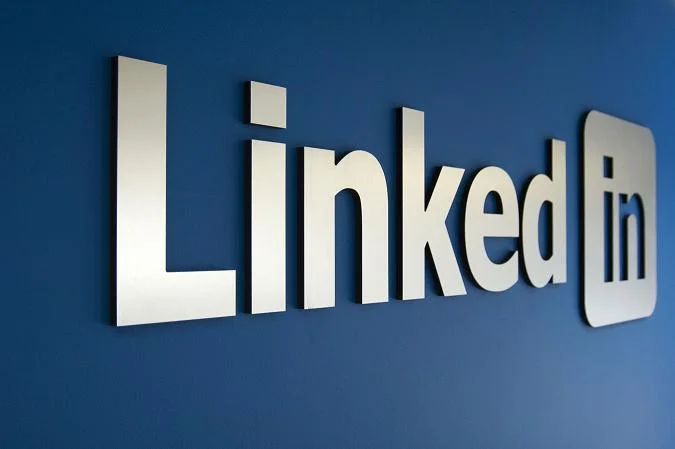None of us can predict what will happen with the Coronaviruses, and specifically the current outbreak of coronavirus disease (COVID-19), but big business is already taking preclusions. Global event have been cancelled or postponed, like Mobile World Congress in Barcelona last month, sporting events, concerts and many international businesses are limiting staff travel. And of course, governments around the world are also controlling international travel. Here are fourteen things you need to consider right now…
Managing your Millennial Sales Team – 7 Tips
5 Tips How to Plan for Your Company’s Expansion
Successful business growth doesn’t happen accidentally. While there are times when rapid expansion occurs due to unforeseen factors such as large-scale market changes or shifts in demographics, for the most part, a business plans for expansion long before actual growth takes place. This planning helps anticipate potential challenges and roadblocks, as well as define growth opportunities—all so expansion takes place in a hopefully ordered and effective manner. Here are five tips on planning for expansion that can help inform your strategy…
Exceed your Sales Goals with a Robust Referral Program
How to Involve Your Team in Setting Goals
How Would it Feel if Sales Was Taken Care of For Your Company?
You may have the best product or service out there, but you need sales. The bottom line is that if you want to get larger than a few people, you most probably will need more sales than you can achieve yourself, so if you lack a high-performing sales team, chances are your business will suffer. As anyone who’s ever been in (or dealt with) sales knows, it takes a combination of locating a person with the right sales traits and skills, combined with the best approach to training and guidance, to get the desired result. Here are 4 tips on building a world-class sales team for your company…
How to Motivate and Recognize Your Sales Team
Assembling a high-performing sales team is challenging enough, but that’s just the start of any focused sales effort. With quality salespeople in place, the next task is determining how best to motivate and recognize the hard work they do on your company’s behalf.
If your sales team’s performance has been lackluster or you sense that morale is slipping, keep these tips in mind:
The Smart Way To Grow Your Business
Social Media – the Small Business Owner’s Checklist [Infographic]
Social media can confuse a business owner. They know they need to do it, often feel intimidated, sometimes get sucked in so it saps time from other valuable business actions. More worrying they can’t always prove that it has an ROI (return on investment). Then, like so many actions, it dwindles, and that lack of ROI is a self-fulfilling prophecy. So, how do you win at the social media game?
Five Tips for a Better Presentation
7 Tips for Managing Your Millennial Sales Team
We often hear that millennial employees are a breed apart and require a shift in management style and perspective. The same can be said about a millennial sales team and what’s needed to effectively manage and leverage their particular outlook and talents. Generally speaking, think of these younger salespeople as self-confident, positive thinkers who are thoroughly comfortable with digital technologies in all forms, and ready to take on sales challenges unique to your company and industry...
LinkedIn – for highly intelligent business owners, who are just getting starting on Social Media
Maybe you have a wealth of experience and one (or multiple) businesses, but you just haven’t used LinkedIn before. It happens. Then 2018 rolled around, and you took the bold decision, that if you’re doing any B2B marketing or networking, you need to be on LinkedIn.
Not many professionals say, “don’t see the need to waste time on LinkedIn.” But I do know a number of business owners and CEOs that feel they missed the boat the first time around, and now don’t know if or how to start.
First off, there is no ‘if’. If you own a company, then whether you want sales or new recruits (and the correct answer is – yes, I need both) then you need to be on LinkedIn. So, here is what you need to know.
Networking Made Easy
Buyer Personas to Prequalify Prospects
Do you receive a lot of inquiries from potential customers that turn out to be unqualified? While sales is a numbers game, you need to make sure you remain focused on your core competencies. If you are spending too much time on prospects that aren’t qualified, then your marketing process isn’t doing its job. Make sure your website and other marketing materials are very clear about who you work with.
Every business person knows about target markets, and you have likely defined your target market based on demographic targets such as gender, age, location, etc. Buyer personas take that a step further to include psychographic information based on actual current client and target prospect research to focus on why your target customer makes a purchase decision.
Pro Business Tip: Start developing your buyer personas by asking these 9 Questions You Need to Ask When Developing Buyer Personas. Do not rely only on your own answers to these questions, but include your sales team, current clients, past clients, and people who have not become clients. Also, consider implementing a survey for leads who ultimately decided to purchase from a competitor or substitute.
By now, you may be wondering what buyer personas have to do with prequalifying prospects. It boils down to the cliché example of the buyer who wants a hole, not a drill. If you take the time to develop your buyer persona, you will have a deeper understanding not just of who your ideal customer is, but what they need.
Once you have developed your buyer personas and understand who they are, you can begin to craft your marketing messaging and communications around your ideal customer. By targeting your message, you will find that your marketing is generating a lower number of leads, but a higher percentage of those leads will be qualified to move into the sales funnel, thus saving time and money in the qualification process.
To learn more about buyer personas and to help streamline your marketing pipeline, be sure to contact us today!
4 Tips to Boost your Sales by Kick-Starting your Influencer Marketing
Your company’s marketing efforts are up against some stiff competition. Way back in 2014, the research firm Yankelovich estimated that “the average American is exposed to 5,000 advertisements a day” (and we can all imagine that number has grown since then). As a result, your target customer have become increasingly impervious to ads, banners, pop-ups and other attempts to draw their attention to any particular product or service.
What’s the solution to overcoming this blizzard of images and ads that fewer people pay attention to? For many businesses, the answer lies in influencer marketing.
In case the term is unfamiliar, it’s pretty much what it sounds like, that is, “the action of promoting and selling products or services through people (influencers) who have the capacity to have an effect on the character of a brand.” And in our era of social media, influencer marketing has largely shifted from relying on superstar athletes and Hollywood celebrities to aligning with individuals with massive followings on Twitter, Facebook, Instagram, etc.
If you feel influencer marketing has potential to dramatically enhance awareness of your brand, keep these tips in mind:
1 - Be selective about the influencers you pursue. Obviously, an influencer should possess a following whose tastes and needs correspond to your offerings. Research influencers before asking them to endorse or otherwise promote your products or services, to ensure that you’re connecting with likely prospective customers.
In the same respect, it’s not necessary to chase after “A-list” influencers with the largest social media audience. As communications strategist Linda Landers notes, “If your influencers are reaching the target market for your brand, then you’ve hit the jackpot, no matter how large or small their audience may be.”
2 - Clarify your goals. Associating with a key influencer can assist your business in a variety of ways, so it’s helpful to determine beforehand where they might be most effective. As noted, boosting brand awareness is a common objective, but there may also be opportunities to:
• Actively generate sales leads
• Reach a wholly new target audience
• Become more visibly active on social media
• Strengthen your relationships with an existing customer base
Knowing what you want to achieve will affect the ways in which you approach influencer marketing.
3 - Reach out to influencers in an authentic, respectful manner. In many ways, key influencers need businesses like your own as much as you might need them. But they will also be selective about whom they associate with. So, don’t rush in like a bull in a china shop. Cultivate a relationship based on an approach of authenticity and respect.
Start slowly, by following the influencer on social media. “From there you can comment on posts, retweet their content, or simply send them a compliment via social media,” advises marketing communications expert Bonnie Harris. Demonstrate a sincere interest in their content and don’t ask for reciprocity “until they see that you also want to do something for them.”
4 - Incorporate influencer marketing in a broader strategic plan. It’s exciting to successfully associate with a prominent social media figure and to begin amassing a whole new set of followers. In the long run, however, influencer marketing is more effective as part of a larger strategy that also draws upon more traditional marketing activities. This way, you can refine your various campaigns to reap the most benefits from a wide range of strategies.
Want more advice on sales and marketing or general advice from other business owners like you? Find out if a TAB Board is right for you!
The Top 5 Sales Myths Every Business Owner Needs to Know
Every business owner (you and I included) is a sales person at some level. Pretty much 99% of the business owners I work with must sell to customers (potential and/or existing). And we all must sell our ideas to employees, vendors, partners etc.
Then, we move to the next level of a maturing business, where we (as the owner) can’t do all the selling. Either we don’t want to do all that selling, or we realize we can’t do everything in the business (if you get this, then great – your business is doing great).
Here are the 5 sales myths you need to know.
Myth #1: We can pick any employee to learn sales.
Well, perhaps not anyone—but certainly the guy in marketing who’s such a well-known “people person.” Right? In fact, salespeople who are good at what they do are a breed apart. They have a unique ability to strategize and think ahead, regardless of where they are in the sales cycle. They’re also committed to building relationships that don’t have any immediate pay-off. Yes, they’re persistent by nature, but that persistence encompasses much more than making repeated telephone calls. It involves ongoing research and working hard to retain such “soft” information as the name of a client’s fifth-grade daughter.
Myth #2: The right salesperson can convince anyone to buy our product.
Yes, salespeople are persuasive by nature (and training). But the era of mass impulse buying is long past, thanks to the wealth of information available to consumers online. Prospects know a lot more about your business before they’re ever approached by a member of your sales team, so they’ve already made at least a partial decision about whether to consider purchasing your product or service.
Expert salespeople understand the key is determining if a prospect has a genuine need for what they’re selling. They know they could spend all day extolling product features, when all the would-be customer wants to know is, “What’s in it for me?” Such sales veterans aren’t interested in trying to sell to everyone they meet.
Myth #3: CRM and online resources make selling easy.
While it’s true that Customer Relationship Management and the internet’s vast toolkit of resources offer advantages undreamed-of in an earlier time, the best salespeople understand that these resources help pave the way, but aren’t the cause of sales. They use online data to help prepare for their appointments with prospects, but never mistake the web and/or social media as replacing the all-important relationship they build with individual buyers or department managers.
Myth #4: The best salespeople see everyone as the “enemy” (including their fellow employees).
We can pigeonhole salespeople as wildly competitive and out to make themselves better than anyone else, including the people they work with. But don’t fall for the idea that your best performers will be cold-blooded, deal-making machines. Instead, aim for a sales culture within your organization that promotes a team mentality, by rewarding more than just the top performers, and by inspiring confidence in the entire team’s capabilities.
Myth #5: Our sales team must always be closing.
We all fall prey to the notion that sales must focus entirely on “ABC” (always be closing). But, as noted earlier, sales are equally all about relationships. And those relationships must revolve around a discussion of value to the customer, not the salesperson’s need to meet or exceed quotas. Building relationships takes time, so the most effective perspective is long-range, rather than any short-term benefit to the company.
Want more advice for your sales process, or general advice from other business owners like you? Find out if a TAB Board is right for you!
Four Tips for Successful Lead Generation
Your sales need qualified leads, like you need oxygen – it is the lifeblood of most businesses.
What is a qualified lead? Someone that has demonstrated an interest in your business’ products or services and is qualified to purchase from you. I other words – has the cash – or whatever else they need to have (location, time, prerequisite) to buy. Some of these leads can be nurtured into prospects and converted into sales, and won’t. To get tips on how to connect with qualified leads you can view our recorded webinar.
There are four key elements you need to get right to maximize qualified leads
1. Your lead capture forms MUST be user-friendly
Generating leads starts with capturing key customer information—enough to move a casual
visitor to your site to start the sales process rolling. Many sales efforts stumble when the lead capture forms on your landing page don’t reflect a typical user’s preferences; either they ask for too much information or, too little of the user.
Short forms may generate larger numbers of potential leads, but the quality of those leads might be lacking. There simply won’t be enough for your sales team to go on, and a lot of time can be wasted chasing after prospects who stubbornly refuse to become “qualified” in the desirable sense of the word.
Forms that ask for too much information are most likely to discourage potential interest in your business offering. (Though, on the bright side, those visitors willing to share an abundance of information are probably better qualified to begin with.)
Finding the right amount of information you ask for on your lead form may depend on what you offer as a “reward” for sharing information. Strive to balance your request for data with the value of the benefit you’re offering.
2. Your web pages should be optimized to generate leads
As with any business site, visitors flock to certain pages more than others. Businesses sometimes err by not optimizing the most heavily trafficked sites (such as the home page, “Contact Us,” etc.). Here are opportunities to seize on prospect interest in your business.
Make sure these pages are optimized with eye-catching, stand-alone calls-to-action (CTAs), generally placed in the upper left-hand corner for prime visibility. Also consider adding special offers on these pages, to generate further interest.
If your CTA does happen to send users to a general page on your site, it’s likely that they won’t bother wasting the time trying to find what they were after in the first place. They’ll just get it elsewhere.
3. Your call-to-action requires urgency
Speaking of CTAs, how compelling are the ones you feature now?
Remember, visitors come to your site at different stages in their “buyer’s journey.” A generic CTA won’t likely produce much response. Consider tailoring these with different goals in mind, such as downloading a white paper, viewing a demo product video or some other value-added incentive to generate more click-throughs.
4. Define what a ‘qualified lead’ is and ensure everyone in your business agrees
In some organizations, there’s a clash between marketing and sales when it comes to defining a lead.
Marketing-qualified leads (MQLs) are those leads identified by marketing as having genuine potential for a long-range customer relationship (with an emphasis on repeat business), These leads may grow out of analytic results or customer demographic characteristics that have proven successful in the past.
Sales-qualified leads (SQLs) are, by contrast, regarded by the sales team as promising opportunities for a short-term closed deal.
It’s imperative that your company’s definition of an MQL matches its definition of an SQL for this transference between departments to work seamlessly. For better results, close communications between teams will improve overall sales by generating a marketing agenda that best suits and supports your sales force.
Want more advice on sales and marketing or general advice from other business owners like you? Find out if a TAB Board is right for you!









![Social Media – the Small Business Owner’s Checklist [Infographic]](https://images.squarespace-cdn.com/content/v1/5637c084e4b01270cf2c5515/1526914133366-6S25FDILBSCW39SDEZ5Y/social+media+keyboard.jpeg)



